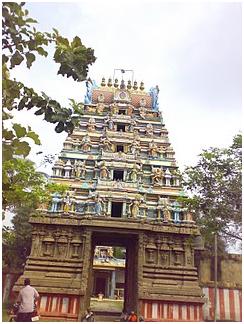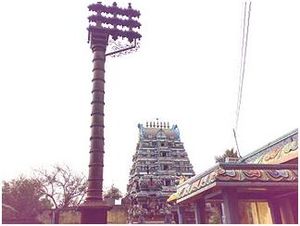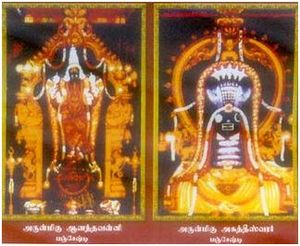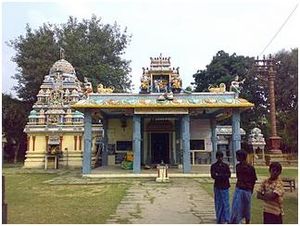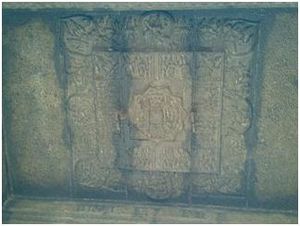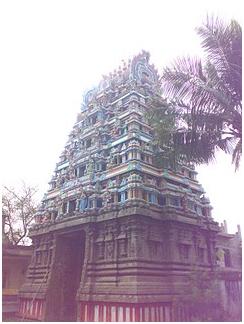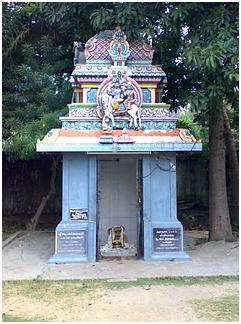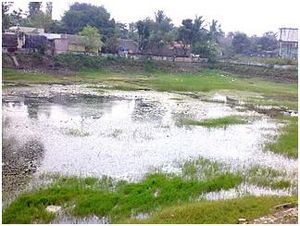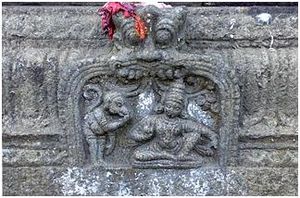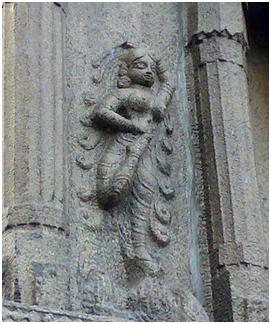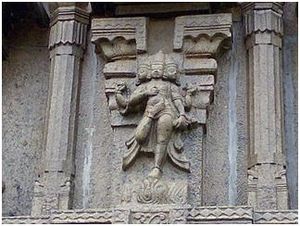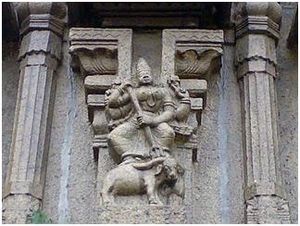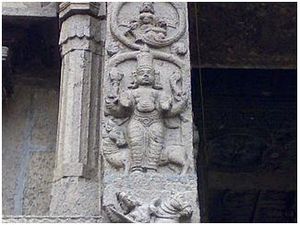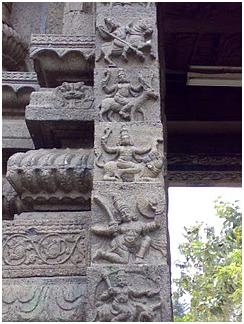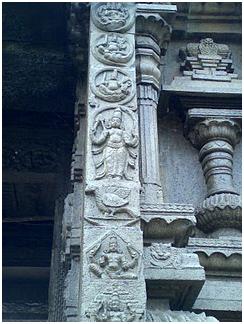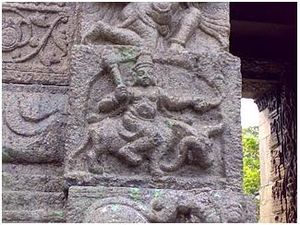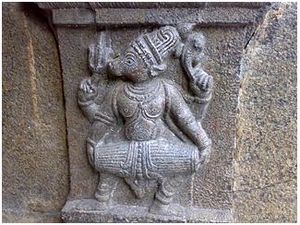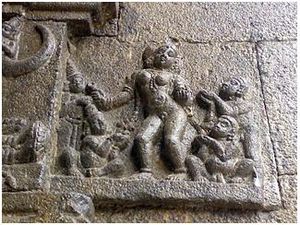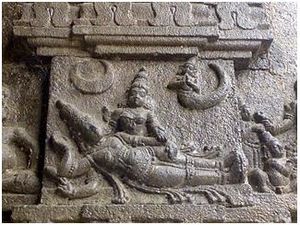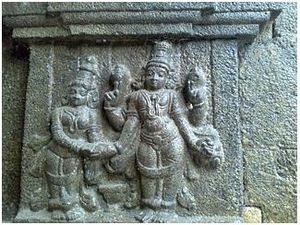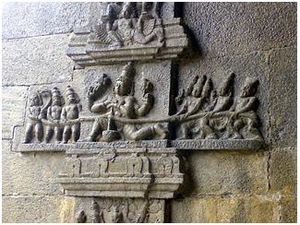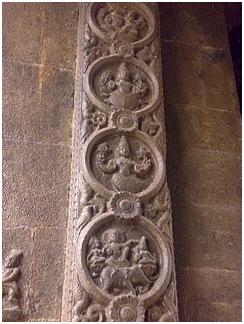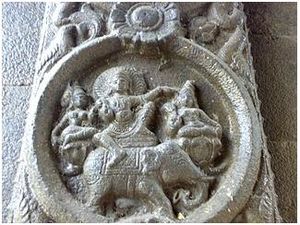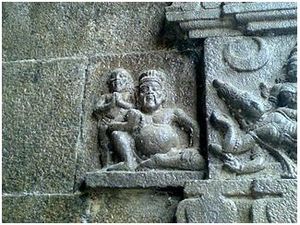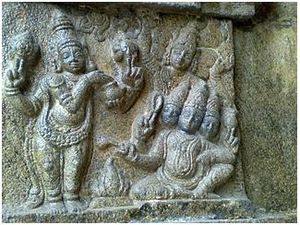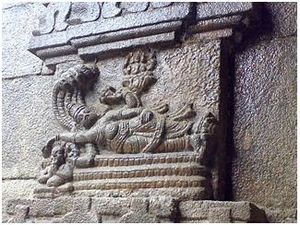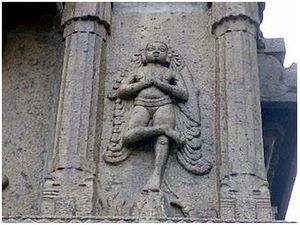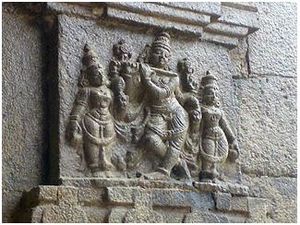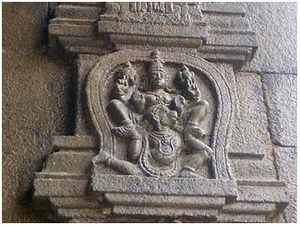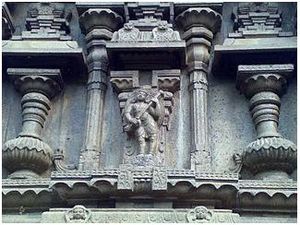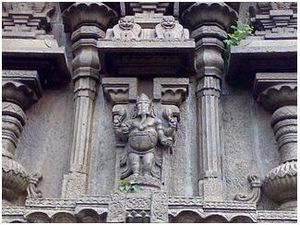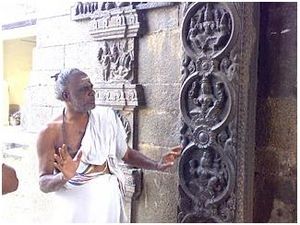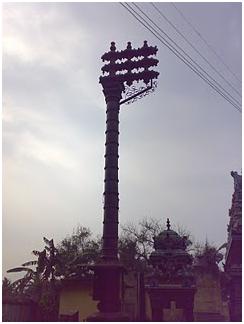Pancheshti Sri Agatheeswarar
Pancheshti is a very small village located on Chennai Kolkota highway, about 30 kms from Chennai. After crossing Red Hills and Karanodai on the highway, you have to take a right turn to enter this village. The temple is just 500 meters off the highway. Pancheshti had got its name from Pancha Ishti. Pancha means 5 and Ishti means Yagna means Penance which is performed to get some wish fulfilled.
According to legend, there lived a demon king called Sukethu, who along with his family suffered some curse. To get him relieved of the curse, Sage Agasthiyar performed about 5 yagnas called Deva Yaagam, Brahma Yaagam, Bhootha Yaagam, Pithur Yaagam and Manusha Yaagam here. Hence this place got its name Pancha Ishti which later corrupted to become Pancheshti and now Panchetti. It is said that Sage Agasthiyar stayed here for long and worshipped Lord Shiva and also helped the Devas like Lord Indra, Indrani (Indra’s wife) and Viswaroopan to get relieved of their curses, by performing Pradhosha Poojas.
A king called Mithradhwaja, who was ruling this part with his capital as Kanchipuram, used to visit this temple on all Pradhosham days to worship Lord Shiva here. Once during such visit, he heard a voice crying for savior. When he went near, he saw a tiger trying to kill a old man who was a passer by. The king asked the tiger to leave the old man. The tiger replied that it is also old and has to feed it’s family, for which the old man is the prey. The king told the tiger to take him as the prey and leave the old man alive. The king also said that he is on his way to Pancheshti for Pradhosha Pooja and on return he will offer himself to the tiger. The tiger agreed. After his pooja the king returned to the tiger and asked to take him as the prey. The tiger vanished and Lord Shiva gave Dharshan to him along with Parvathi. The king who was overwhelmed with the mercy of the Lord, has contributed a lot to this temple.
The Lord here is a Swayambhu (self evolved) Lingam, which is said to be existed even before the arrival of Sage Agasthiyar here. As Agasthiyar worshipped here, the Lord here is called Sri Agatheeswarar. The Ambaal (Goddess) here is Sri Anandhavalli, who is so beautiful in standing posture facing south. She is made of green granite and is three eyed, hence considered powerful. As she has her left foot forward, she is believed to be the destroyer (Chathru Samhaari) of all the evil forces or enemies. Worshipping her here eliminates all the evil forces, enemies and hurdles in one’s life.
Sage Agasthiyar has installed a Maha Yantra, also called Durga Yantra (containing scriptures) just in front of Ambaal to bring down her fierce (Ugram). Abishegams are performed to this Yantra on Tuesdays and Fridays and also poojas during Rahu Kaalam timings. The sculptures of Adhi Devathas (Gods) connected to the Maha Yantra which is installed in front of Ambaal, is sculpted at the ceiling (in the pic above) of the entrance in Raja Gopuram. This Yantra is called Ekadasa Kona (11 angled) Maha Yantra which contains sculptures of all the Gods pertaining to the Maha Yantra which is found in front of Goddess.
More importance is given to Ambaal in this temple and the Raaja Gopuram (Main Tower) itself is facing south towards Ambaal. All the sculptures in Raaja Gopuram are made to face Ambaal. Ashta Dhik Baalakas (Gods of 8 directions) Indra, Agni, Yama, Nrithi, Vaayu, Kubera & Eesaan are sculpted in a row near the entrance of Raaja Gopuram facing Ambaal here. Also the Navagrahas sculpted on the other side are again facing Ambaal. In Navagrahas, Lord Saneeshwara is seen with his Vaahana (carrier) as Eagle instead of crow, which is quite unusual. As all the Devas and Navagrahas face the Ambal here, it is believed that Ambaal is so powerful in removing Navagraha Dhoshas.
In Hindu mythology, any temple facing the South is called Parihaara Sthalam, in which one can find remedy for any kind of problems in life. Doing Annadhaanam (free feeding) here is considered most auspicious and believed that it will get us back the lost positions, possessions and will help attain God’s feet. Lighting the Ghee lamp here, one is removed of all his sins. The Theertham (Pond) here is called as Agasthiya Theertham. It is said that, the pond originated from the saliva of Sage Agasthiyar. As per the legend, river Ganges (holy Ganga) merges in this Theertham during the Full moon days of Thamizh month ‘Vaikaasi’. If one makes a dip here in this water on the said day, it is said that he will never have a re-birth in this world again.
Vilvam tree is the Sthala Vruksham here. This holy place is said to have references in ancient Naadi Astrology for various Parihaarams (remedies). Sage Agasthiyar’s disciple, Sage Pulasthiyar has installed a Shiva Lingam in a separate shrine facing south, inside this temple. This God is called Ishta Lingeswarar who is worshipped for fulfilling one’s wishes, resolving any legal problems and to gain peace and harmony. The other deities present here are Sri Vinayagar, Sri Dhakshinamurthy, Sri Maha Vishnu, Sri Brahma, Sri Durga etc. There is also a small shrine for Balamuruga in which Lord Muruga is seen in Srishti Kolam (means gesture of a creator), which he did when he captured the powers of Lord Brahma and started doing the job of creation by himself, when onceBrahma couldn’t answer Lord Muruga on the meaning for Omkara.
The walls of Raja Gopuram of this temple, carries hundreds of sculptures which are feast to watch. Though this is a Shiva temple, the sculptures of Vaishnava concepts are given equal importance here. The entire walls of Raja Gopuram, have sculptures connected to incidents from all the 4 Yugas. I was able to capture a few sculptures out of so many.
Another important thing which needs mention, is about the priest, Sri Rajamani Gurukkal whose family is ancestrally serving this temple and the God here. He patiently explains about each and every part of the temple, the legend, history and about the sculptures present here with the only objective of making every devotee to know about the significance of the temple and it's heritage.
All full moon days, Pradosham days, Pankuni Uthram, Vaikasi Visakam & Sivarathri days are most auspicious here and celebrated in a grand manner. One shall reach Sri Rajamani Gurukkal at 94442 20780 to get more details on Poojas, Sevas, Dharshan timings, etc.

